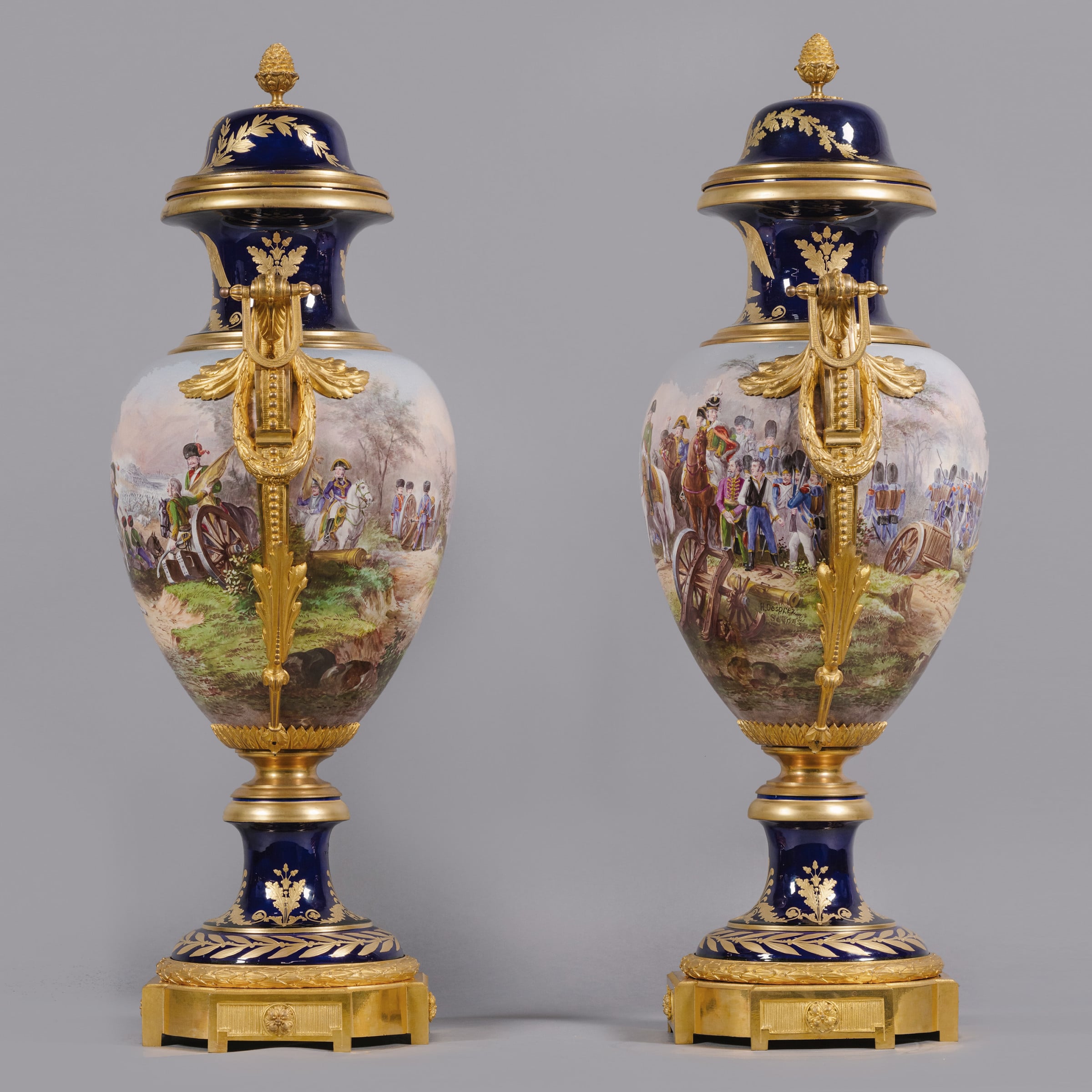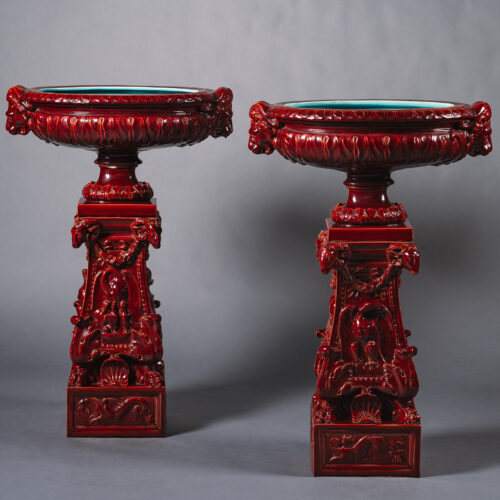Sèvres (Style)
Paire de vases Napoléoniens en porcelaine de style Sèvres, montés en bronze doré et fond bleu cobalt.
£80,000
A Fine Pair of Sèvres-Style Napoleonic Gilt-Bronze Mounted Cobalt-Blue Ground Porcelain Vases. Signed by the artist 'H. Desprez Sevres'. Each vase...
Dimensions
Height: 99 cm (39 in)Width: 41 cm (17 in)
Depth: 33 cm (13 in)
Description
A Fine Pair of Sèvres-Style Napoleonic Gilt-Bronze Mounted Cobalt-Blue Ground Porcelain Vases.
Signed by the artist ‘H. Desprez Sevres’.
Each vase is of inverted ovoid form finely painted all over with Napoleonic battle scenes, the covers embellished with a raised gilt “N” and a crown, flanked by oak and berried laurel branches, the necks with an eagle with spread wings, each with a spreading foot with raised gilt design and battle dates of 1797 and 1805, raised on gilt-bronze re-entrant bases.
The vase with 1797 depicts the battle of Rivoli, where Napoleon defeated the Austrians in Italy for the 4th time. The vase with 1805 depicts the battle of Austerlitz, which is regarded as the greatest victory by Napoleon, where his troops defeated the much larger and powerful Russian and Austrian army led by Emperor Alexander I and Holy Roman Emperor Francis II.
French, Circa 1900.
Date
Circa 1900
Moyen
Bronze doré et porcelaine
Signature
H. Desprez Sevres
The Sèvres Porcelain Manufactory was founded to the east of Paris in the disused Royal Château of Vincennes, late in 1739-40. and moved to the village of Sèvres, west of Paris in 1756, en route to King Louis XV’s palace of Versailles.
Here it was also adjacent to Louis’s mistress Madame de Pompadour’s own château at Bellevue. She was delighted with the factory’s new location – as she knew she could entice Louis to take a greater interest in it when it was so near their own residences. Indeed, the King became such a keen patron of the factory that, when it ran into financial difficulties, he bought out the shareholders and became the sole proprietor. The factory remained a royal enterprise until the French Revolution, when it was nationalised.
The popularity of the Louis XV style during the nineteenth century led to a number of companies in and around Paris, creating exceptional Sèvres-Style porcelain based on eighteenth century models and to the same exceptional quality. Often these pieces were of exhibition quality and scale, and finely painted by the best studio painters of the day such as Robert, Desprez and Poitevin.

















 Imprimer
Imprimer


